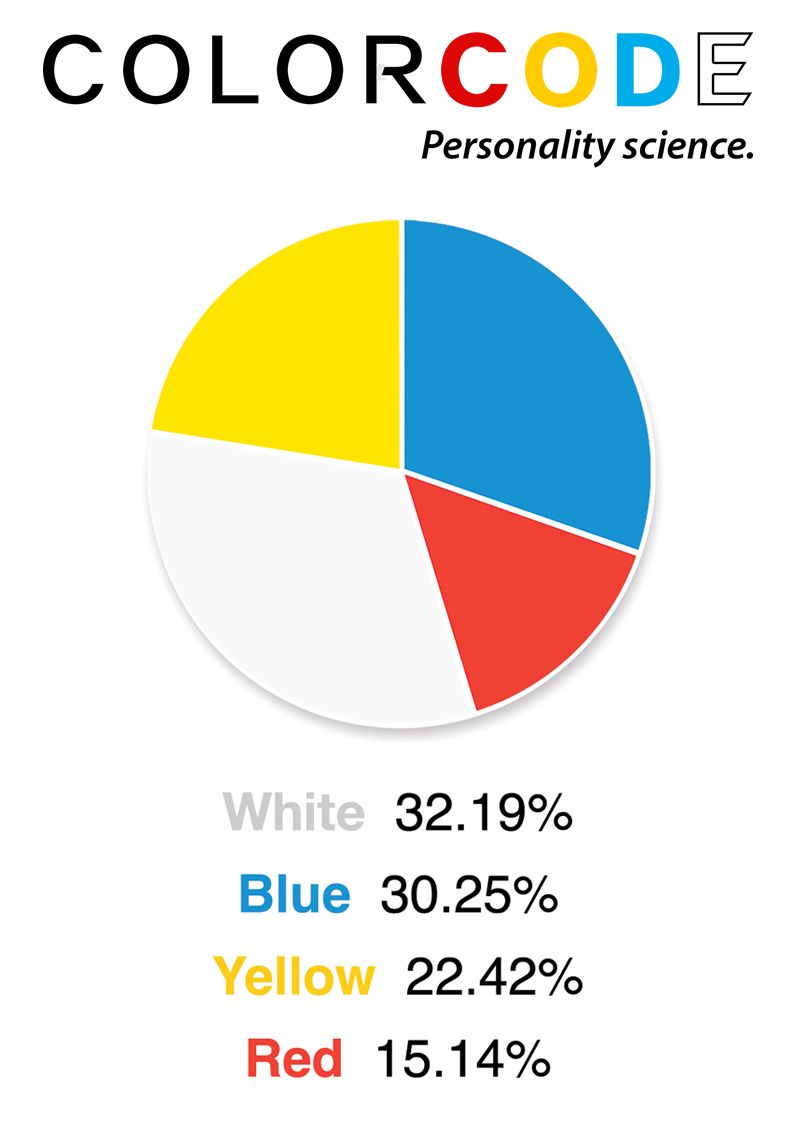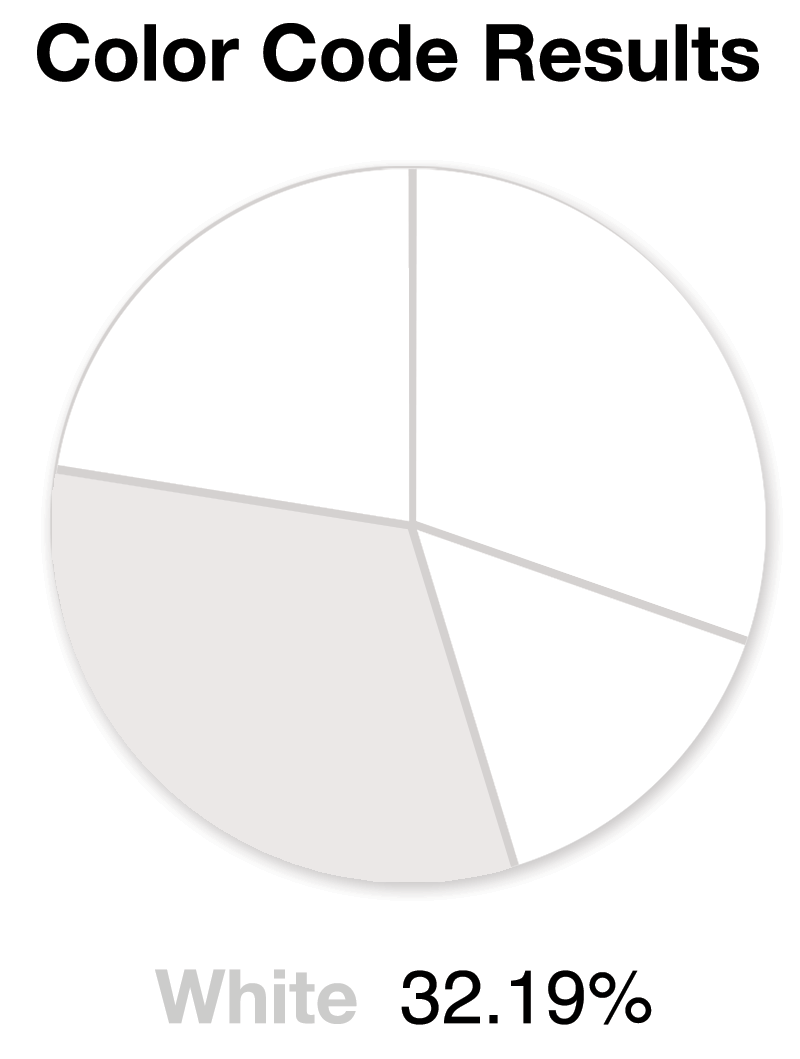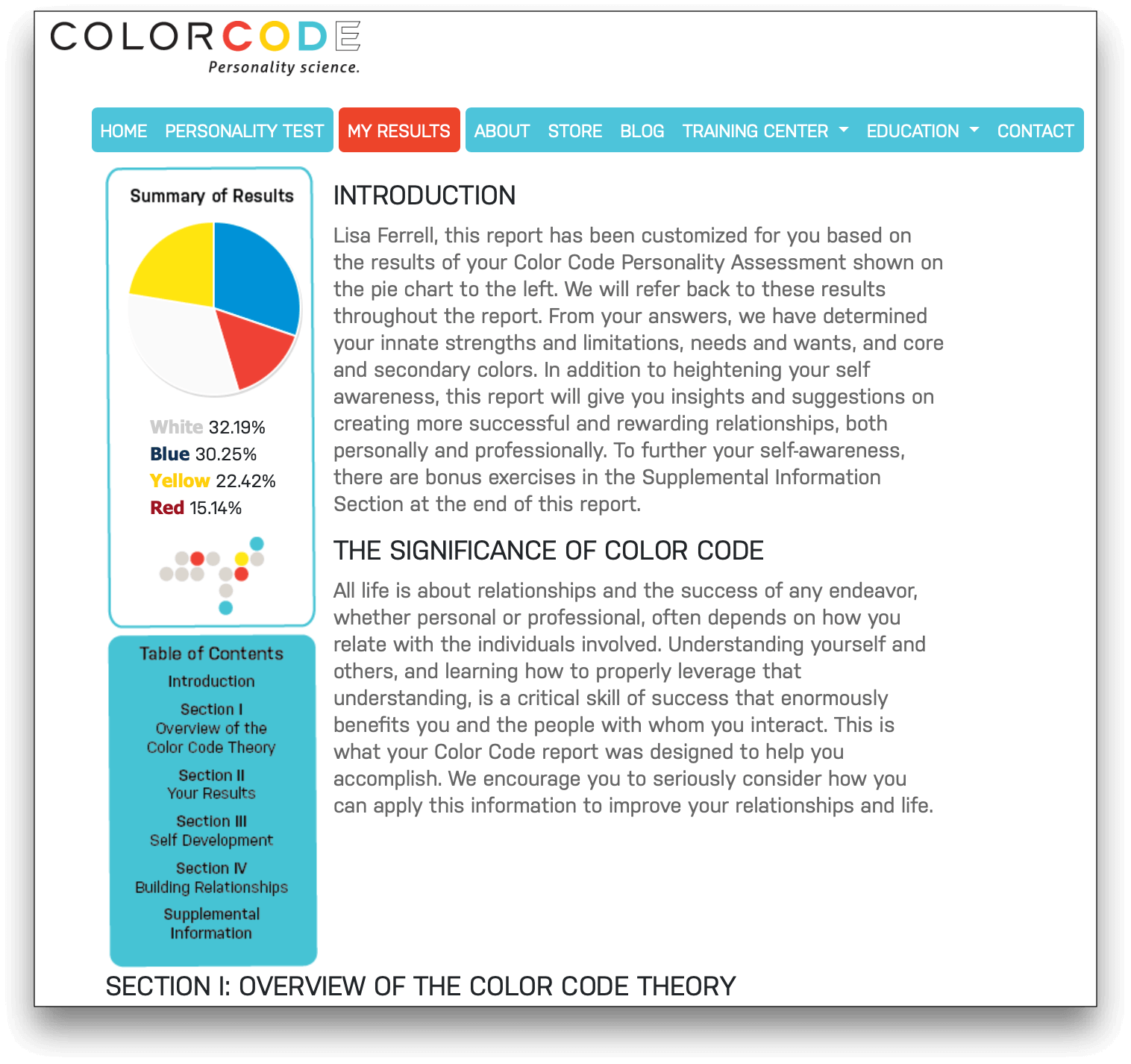
Color Code
What Hue are You?The Color Code Personality Assessment is a fantastic tool for learning to understand yourself and others better and learning to adjust your communication style for more productive connections. The science behind this personality assessment stands out as the most precise, all-encompassing, and user-friendly assessment accessible.
Distinguishing itself from other personality tests, it isn’t a pass-fail matter. Its primary purpose is to assess, not test, your personality. The Color Code goes beyond merely identifying your actions; it delves into the reasons behind your behavior, providing profound and practical insights into the motivations of those around you.
If you desire to enhance a relationship in your life, gain an edge in your professional environment, or deepen your self-awareness, we encourage you to take our personality assessment and experience the benefits of the Color Code today!
What Hue Are You?
The following four core motives are the foundation of The Color Code Personality Assessment. Dr. Hartman has spent more than 36 years researching and testing the Color Code to help you understand and identify your core (primary) motive and full personality type. You will discover your strengths and limitations and your driving core motive representing why you do what you do.

REDS
Driving Core Motive (Power)
Reds, driven by power, are motivated by the ability to move efficiently from one point to another. While some may associate power with control, for Reds, it means being able to accomplish tasks in the most direct and effective manner. They prioritize productivity and strive to appear competent to others.

BLUES
Driving Core Motive (Intimacy)
Being motivated by intimacy means that Blues have a strong desire to establish deep and meaningful connections with others. They value authenticity and genuineness, often reacting strongly against those who are fake or superficial. Blues prioritize truth, integrity, loyalty, and sincerity in their relationships. They tend to have a small circle of true friends, as they seek genuine and intimate connections.
Blues require understanding and appreciation from others. They prioritize quality in everything they do and exhibit loyalty as friends, employers, and employees.

WHITES
Driving Core Motive (Peace)
Being motivated by peace means that Whites prioritize inner harmony and balance, going beyond the mere absence of conflict. Disrupting their sense of equilibrium is something Whites actively avoid, often changing the subject when confronted with topics that make them feel insecure. They strive to maintain a sense of tranquility.
Whites value independence and kindness. They have a strong aversion to confrontation and will go to great lengths to avoid it. They require solitude and reject attempts at control from others. Whites prefer to do things in their own unique way and on their own timeline.

YELLOWS
Driving Core Motive (Fun)
Yellows, driven by fun, do not simply seek endless frivolity but rather prioritize living in the moment. They enjoy the process of what they are doing more than the end result, which is why they appear engaged and present in the present. Yellows appreciate structure, although they may struggle to create it themselves. They embrace a "seize the day" mentality and view life as a party they are hosting.
Take The Color Code Personality Assessment
Get Your Full Results
Take The Color Code Personality Assessment
Get Your Core Color Only

Sample the power of the Color Code Personality Assessment by receiving a pie chart representing your core color, offering you a glimpse into what this powerful personality science tool will offer you.
Answers to common questions
Regarding answer selection when taking the profile:
Obviously, not every question on the profile will be totally applicable to every person, but that is considered in the profile scoring. Hopefully, for most of the questions, there is one answer with which you identify the strongest--that is the answer you should choose. Typically, your gut instinct is correct. If there are two choices you find yourself conflicted over, that's normal. It could be that you have a secondary color (which you will learn more about in the Comprehensive Analysis).
Identifying your Driving Core Motive will reveal your natural/innate strengths and limitations, not your learned/developed ones. We advise you to choose the answer that feels most NATURAL to you, even if you also identify with some of the other choices.
It is possible that none of the choices will speak to you on some questions. Again, only some questions will have a perfect answer for every person. Pick the choice that feels the MOST like you, even if you don''t completely identify with it. If this happens on just a handful of questions, it shouldn't affect your results.
Regarding answering the questions from your childhood perspective:
The Color Code Personality Model is motive-based. Most other popular personality assessments are behavior-based. The difference between the two is that the Color Code goes deeper--it explains why you do what you do (motive) rather than just identifying what you do (behavior).
The Color Code theory is that each of us has a Driving Core Motive--the reason why we do everything we do in life. Our Driving Core Motives are innate--they came with us at birth. That is why we advise you to take the profile from your earliest childhood memories of yourself; the theory being that that is when you were most faithful to your Driving Core Motive before outside influences began affecting your behaviors.
For most people, their "childhood self" is the easiest way to identify their natural self. The profile is designed to be taken from the earliest recollections of yourself. The idea is to complete the profile by considering yourself before outside factors influenced you.
We want to identify your personality before you felt pressure to be a certain way, learn to value some characteristics more than others, etc. For most people, the easiest way to do that is to think of themselves as a child--before they were aware of their personalities.
If you had difficulty answering from your childhood perspective, we recommend that you think of yourself when you've been most comfortable with yourself--when you felt most faithful to yourself, instead of acting how outside influences wanted you to act. When answering the questions, think about your very most natural, innate gut instinct--what would you do if nothing from the outside were influencing your decision.


